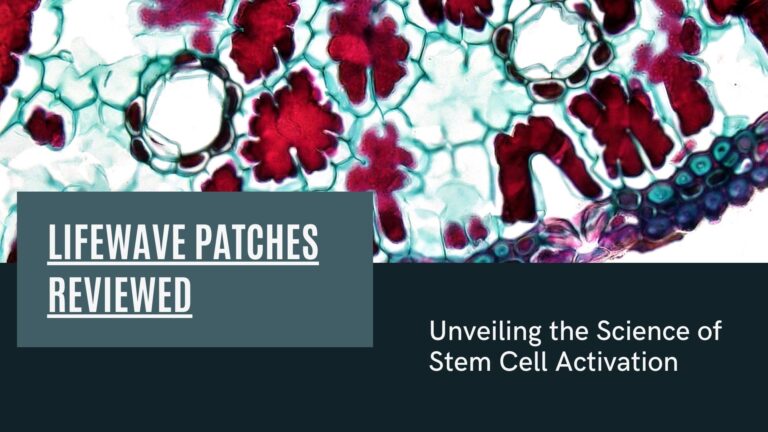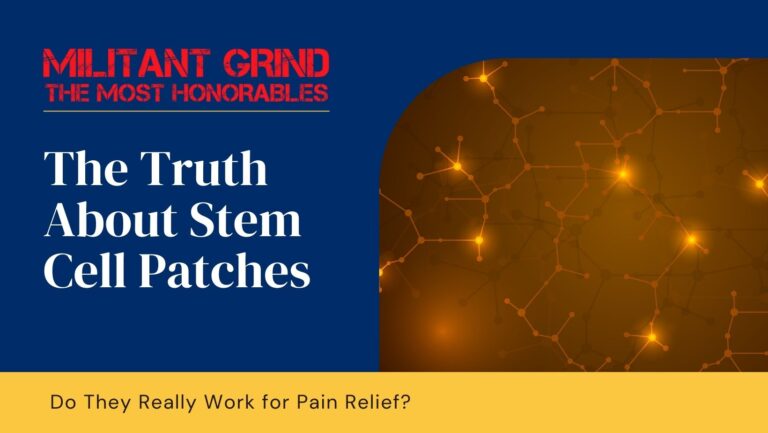The Future of Pain Management: Beyond Opioids with Stem Cell Patches
Current Pain Management: The Dominance of Opioids
Opioids have long been the go-to solution for pain management. They work by binding to opioid receptors in the brain, blocking pain signals. In 2020 alone, the United States saw over 142 million opioid prescriptions, underpinning their dominance in pain relief. However, this dominance comes at a severe cost: addiction and the devastating opioid crisis.
The numbers speak for themselves. According to the National Institute on Drug Abuse, about 2.1 million Americans suffered from substance use disorders related to prescription opioid pain relievers in 2019. This public health emergency calls for sustainable, safer alternatives.
Pro Tip: If you’re currently relying on opioids for chronic pain, consult your doctor about gradually reducing your dosage while exploring alternative therapies.
The Rise of Non-Opioid Alternatives
As awareness of opioid risks grows, the healthcare industry has been keen to develop and adopt non-opioid alternatives for pain management. Among these are physical therapy, cognitive behavioral therapy, acupuncture, and non-opioid medications like acetaminophen and ibuprofen. Yet, while these options are helpful, they often lack the potency necessary to manage severe or chronic pain effectively.
Here’s where the innovation frontier brings hope. Non-opioid alternatives are undergoing vigorous research and development, promising new solutions that harness the body’s natural recuperative abilities.
Pro Tip: Always conduct a comprehensive evaluation of your pain management strategy with a healthcare professional to include complementary therapies effectively.
Introducing Stem Cell Patch Therapy: A Game Changer
A revolutionary addition to non-opioid alternatives is stem cell patch therapy. These patches offer a cutting-edge, minimally invasive solution for pain management by harnessing the body’s regenerative capabilities. But what exactly are these patches, and how do they work?
The technology behind stem cell patches involves embedding stem cells into a bio-compatible patch. Once applied, the stem cells activate and promote healing in the affected area, reducing inflammation and pain.
Studies have shown promising results. According to a 2021 report in the Journal of Pain Research, patients using stem cell patches experienced a 40% reduction in chronic pain symptoms over a six-month period. These figures highlight the remarkable potential of this innovative solution.
Pro Tip: Always look for patches that have been vetted through rigorous clinical trials to ensure safety and efficacy.
The Science Behind Stem Cell Patch Therapy
Understanding Stem Cells and Their Pain-Relieving Properties
Stem cells are essentially the body’s raw materials – cells from which all other cells with specialized functions are generated. What makes them unique in pain management is their ability to transform into various cell types and release cytokines. These can modulate the body’s immune response and reduce inflammation, which is often the root cause of pain.
The application of stem cells to localized pain areas has shown dramatic reductions in pain and improved tissue repair. In a study published in Stem Cells Translational Medicine, patients with chronic back pain reported significant relief after receiving stem cell therapy.
Pro Tip: Look for medical articles and journal studies when researching the efficacy of stem cell therapies. Reliable information is crucial to informed decision-making.
Types of Stem Cells Used in Patches
There are different types of stem cells, each with unique characteristics. The primary types used in stem cell patch therapies are Mesenchymal Stem Cells (MSCs) and Induced Pluripotent Stem Cells (iPSCs).
MSCs are commonly derived from bone marrow or adipose tissue and are incredibly potent in tissue repair and pain relief. iPSCs, on the other hand, are reprogrammed cells that can transform into any cell type, providing versatile applications in pain management.
Both show tremendous promise. However, MSCs are currently more prevalently used due to their established efficacy and safety profile.
Pro Tip: Discuss with your healthcare provider the pros and cons of different stem cell sources to tailor the best approach for your specific condition.
Mechanisms of Action: How Stem Cell Patches Work
The primary mechanism by which stem cell patches alleviate pain involves two critical functions: differentiation and cytokine release. The stem cells differentiate into specific cell types needed for repairing damaged tissues, while cytokines aid in alleviating inflammation and promoting healing.
A clinical trial documented in the American Journal of Sports Medicine found that patients with knee osteoarthritis treated with stem cell patches showed a 55% improvement in joint function, thanks to these dual mechanisms.
Pro Tip: Using stem cell patches in conjunction with other therapies like physical rehabilitation can amplify the treatment’s benefits and accelerate recovery.
The Advantages of Stem Cell Patch Therapy
Non-Invasive and Convenient
One of the standout advantages of stem cell patch therapy is its non-invasive nature. Unlike surgical interventions, applying a patch is straightforward and doesn’t involve the same recovery time or potential complications.
Simply adhere the patch to the skin over the pain site, and let the stem cells get to work. This convenience makes it particularly suitable for individuals with busy lifestyles or those who are risk-averse to surgery.
Pro Tip: Ensure your skin is clean and dry before applying the patch to enhance the effectiveness of stem cell absorption.
Reduced Risk of Addiction
Unlike opioids, stem cell patches offer significant pain relief without the associated risk of addiction. This is particularly vital for those wary of falling into the vicious cycle of dependency.
A peer-reviewed study in Pain Medicine highlighted that patients using bio-compatible patches had zero incidences of dependence, compared to those using opioid-based treatments.
Pro Tip: Always store your stem cell patches safely, keeping them away from children and pets to prevent misuse.
Potential for Long-Term Relief
One of the most promising aspects of stem cell patch therapy is its potential for long-term pain relief. Rather than merely masking symptoms, stem cells address the underlying cause of pain – whether it’s inflammation, tissue damage, or degenerative conditions.
Research published in the Journal of Orthopaedic Research noted that patients with chronic tendinitis treated with stem cell patches experienced sustained pain relief for up to a year.
Pro Tip: Document your pain levels and any changes you notice while using stem cell patches to provide detailed feedback to your healthcare provider.
Actionable Steps to Integrate Stem Cell Patches Into Your Pain Management Routine
Consult a Specialist
Before starting any new treatment, it’s crucial to consult a medical specialist who can guide you through the benefits and potential risks of stem cell patches.
Seek out a healthcare professional experienced in both traditional and cutting-edge pain management methods to ensure a balanced evaluation.
Pro Tip: Bring a list of questions to your consultation, focusing on issues like expected outcomes, duration of therapy, and potential side effects.
Understand Dosage and Application
Knowledge about the proper dosage and application technique is essential for maximizing the benefits of stem cell patches.
Follow the manufacturer’s guidelines for how long to wear the patch and when to replace it. Generally, these patches are worn for a specific number of hours daily or rotated based on a set schedule.
Pro Tip: Set reminders on your phone or use a planner to keep track of when to replace your stem cell patch.
Monitor Your Progress
Tracking your symptoms and progress is crucial when integrating any new treatment into your routine.
Use a pain diary or mobile app to note your pain levels, physical activity, and any other relevant metrics. This data can help your healthcare provider adjust your therapy if needed.
Pro Tip: Share this data during follow-up appointments to provide your specialist with a comprehensive view of your progress.
Purchase High-Quality Stem Cell Patches
Quality matters when it comes to stem cell therapy. Only purchase patches from reputable sources to ensure their efficacy and safety.
The best way to source reliable products is through trusted vendors with a proven track record of providing high-quality medical supplies.
Pro Tip: Ensure that the patches you choose are FDA-approved or have passed stringent clinical evaluations.
Ready to revolutionize your pain management? Click here to explore high-quality stem cell patches: Purchase Stem Cell Patches.
Conclusion: The Bright Future of Pain Management
As we move beyond opioids, stem cell patches offer a compelling, safe, and effective alternative for pain management. From significant pain relief to the minimization of addiction risk, these patches could be the key to a brighter, pain-free future.
By consulting medical professionals, understanding proper application, and tracking your progress, you can seamlessly integrate stem cell patches into your pain management routine.
Take control of your health—consider stem cell patches for a safer, effective way to manage pain. Regulary check back for updates and new product information.



